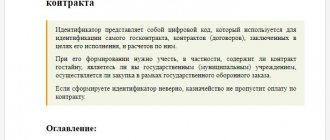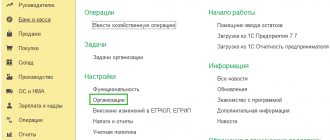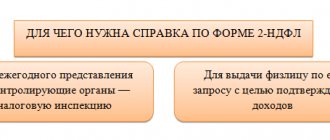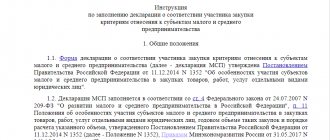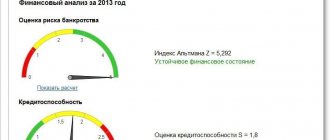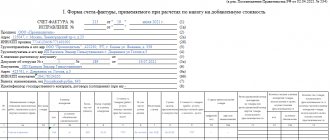The concept of “adjustment” itself implies a change in some data. We will look at changing data in VAT accounting in 1C 8.3 using the “Enterprise Accounting” configuration as an example.
There are two options here: using an “Adjustment Invoice” (CAI) or correcting erroneously entered data. In many ways, the user actions in these cases are similar, but we will look in detail at working in 1C with KSF, as well as how to reflect the direct correction of VAT errors.
CSFs are issued by the seller to the buyer in the event of a change in the price and (or) quantity of goods (works, services). An important condition is that such changes must be agreed upon between the parties to the transaction. Then there is no need to submit updated VAT returns, and CSF (for example, adjustment documents for shipment) are reflected in accounting for the period when they were compiled (from the seller) and received (from the buyer).
There are two types of adjustments – increasing or decreasing the cost of sales. An accountant more often has to deal with a situation of decreasing value, for example, when applying retro discounts.
The accounting treatment is as follows:
From the buyer:
- Decrease in value - in the sales book;
- The increase in value is in the purchase book.
From the seller:
- Reducing the cost - in the purchase book;
- The increase in value is in the sales book.
Before the advent of Russian Government Decree No. 952 dated October 24, 2013, the Seller, when the cost of shipment increased, had to submit an updated declaration for the shipment period. Many sources on the Internet still advise this procedure, but it is no longer relevant. “Clarifications” on VAT are submitted if errors are discovered, and the agreed price change is now not an error.
Let's consider the process of reflecting CSF in the 1C accounting program, first from the buyer, then from the seller. If you still have questions, please contact our 1C system user support service, we will be happy to answer them.
When is the document related to the adjustment issued?
The seller undertakes to issue an adjustment form in the following situations:
- When prices for products, services or work change. For example, if the price has decreased due to a decision to provide a discount to the buyer, which was made after the invoice was issued. Or vice versa - the tariff has increased when the cost is based on regulated prices. Fluctuation is also possible in agreements containing preliminary prices with the option of further clarification.
- In the case of specifying the quantity of goods supplied upon detection of defective products, mismatches, underdeliveries or surpluses that were not discussed in the contract.
- With simultaneous changes in supply volumes and tariff schedules.
For more information about when an adjustment invoice is needed and how to issue it correctly, read this material.
Important! The legislation indicates the need for mutual agreement of the parties with the changes that have occurred (clause 3 of Article 168 of the Tax Code of the Russian Federation). This must be confirmed by primary documentation - contracts and agreements.
If the counterparties to the transaction have reached a consensus on the necessary adjustments, an invoice is created strictly within 5 working days from the moment the agreement is verified (clause 10 of Article 172 of the Tax Code of the Russian Federation). You can also issue a generalized adjustment invoice for several shipments of one product at an identical price (Article 169 of the Tax Code of the Russian Federation).
The form is created in two copies - for the supplier and the buyer. They must be drawn up in accordance with Appendix No. 2 to the Decree of the Government of the Russian Federation No. 1137 of December 26, 2011 (as amended by Decree of the Government of the Russian Federation No. 981 of August 19, 2017).
If the enterprise chose to develop its own document, it is necessary to make sure that it contains all the points specified in clause 5.2 and clause 6 of Art. 169 of the Tax Code of the Russian Federation, - otherwise, presenting the tax difference for withholding will be impossible.
The adjustment invoice is certified by the head and chief accountant of the company (or their representatives who perform similar actions on the basis of a power of attorney). An individual entrepreneur personally signs the document, indicating the details of the state registration certificate (clause 6 of Article 169 of the Tax Code of the Russian Federation).
For more information on when an adjustment invoice is issued and how it is correctly issued, read here.
Features of filling out an amended invoice
In both forms of the corrected invoice, under the main heading of the document containing its number and date, a line (or lines) is provided for entering the number and date of the correction:
- there is only one line in the invoice, and it is located directly under the heading;
- in the adjustment invoice—2: one is intended for information about the correction of the adjustment invoice itself, and the second is for indicating the details of the original invoice for which the adjustment invoice was drawn up.
There are no other features in the design of the corrected invoice. It is formatted in the same way as a regular one, only incorrect data in it is replaced with correct ones.
Definitions
An adjustment invoice is an independent document that is created in addition to the original form when the VAT base changes. According to Federal Law No. 245-F3 of July 19, 2011, sellers are required to display it when there are changes in the price or volume of an earlier supply of goods, provision of service, performance of work or granting rights to property (clause 3, clause 3, article 168 of the Tax Code of the Russian Federation) .
A corrected, or corrective, invoice is a newly compiled version of the primary document in which serious errors were discovered that do not allow the tax service to determine the buyer, seller, type of product or service, their price, as well as the tax rate and the total amount of VAT (p 7 Rules for filling out an invoice, approved by Decree of the Government of the Russian Federation No. 1137 of December 26, 2011).
What is meant by a corrected invoice?
In ch.
21 of the Tax Code of the Russian Federation, the term “corrected invoice”, as well as “corrective”, is absent. Moreover, in both forms of invoice (both main and adjustment), proposed by Decree of the Government of the Russian Federation of December 26, 2011 No. 1137, there is a line for indicating the details of the corrections made to them. In addition, the preparation of an amended invoice is discussed in clause 6 of the Rules for filling out an invoice. ATTENTION! As of July 1, 2021, amendments to the Tax Code of the Russian Federation regarding invoices for the sale of traceable goods came into force. Amendments to the Tax Code of the Russian Federation provide that when selling traceable goods, invoices, including adjustment ones, must be issued in electronic form.
The procedure for issuing and receiving invoices electronically is described in detail in the Ready-made solution from ConsultantPlus. Get trial access to the system for free and proceed to the material.
From July 1, 2022, invoices are issued according to a new form (Resolution of the Government of the Russian Federation dated April 2, 2021 No. 534). Read more about changing details here.
You can download the updated invoice form by clicking on the image below:
ConsultantPlus experts have prepared step-by-step instructions for preparing each line of the updated invoice. To do everything correctly, get trial access to the system and go to the Ready solution. It's free.
Thus, it is implied that corrections are a thing that has a right to exist. Moreover, changes can be made both to the main document and to the corrected invoice.
However, it should be understood that an adjustment invoice and a corrected invoice are completely different documents:
- An adjustment invoice is needed when changes are made to the original data of the primary document (quantity and price), affecting the calculation of the final sales amount recorded in it and the associated VAT amount. Moreover, the adjustment does not mean that an error was made in the original version of the invoice. No, the issuance of an adjustment invoice can be caused by changes in the source data that occurred under the influence of some factors, most often documented (agreements on price changes, retro discounts, identification of shortages, defects or surpluses among the delivered goods).
Learn more about this invoice - “What is an adjustment invoice and when is it needed?” .
- The need for a corrected invoice arises when technical errors are discovered in the original document, which may have negative consequences for receiving deductions on it. However, not all errors result in the need to create a corrected invoice. If they do not affect the correct understanding of the information on the details in which they are included (even mandatory ones), then a deduction on such a document is permissible (clause 2 of Article 169 of the Tax Code of the Russian Federation) - therefore, there is no need for a corrected invoice.
The concept of a corrected invoice as an adjusted source document arose from the adoption of Decree of the Government of the Russian Federation dated December 26, 2011 No. 1137, i.e. since 2012. Previously, a significant part of the technical errors made in the preparation of an invoice could be corrected directly in the incorrect source document, having certified the corrections with the signature and seal of the originator. After the entry into force of this resolution, the amended invoice was given the status of an independent document, with all the ensuing consequences.
When is an invoice correction required?
Not all cases of identified errors in the preparation of an invoice require the mandatory execution of a corrected document. The main purpose of the invoice is to confirm the right to take advantage of a tax benefit in the form of a VAT deduction. If the contents of the invoice do not prevent the tax service from confirming the right to the benefit, then the invoice does not need to be edited.
The Federal Tax Service will be able to verify the right to deduction if:
- The names and other details of the buyer and supplier are uniquely identified;
- It is clearly established who is the shipper and who is the consignee;
- The VAT rate has been determined;
- The names of the positions are correct;
- There is a correct value on which tax is withheld;
- The tax has been calculated correctly.


